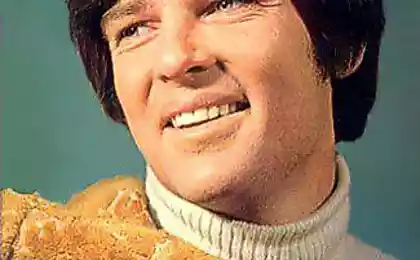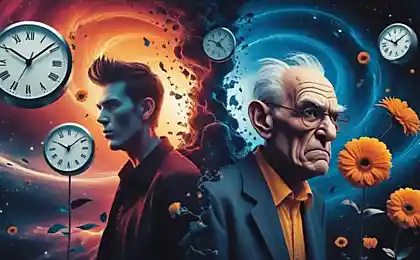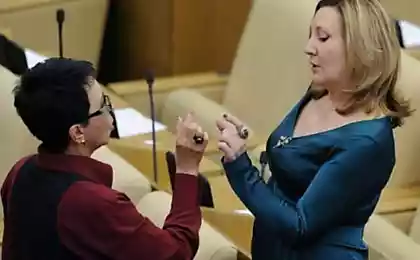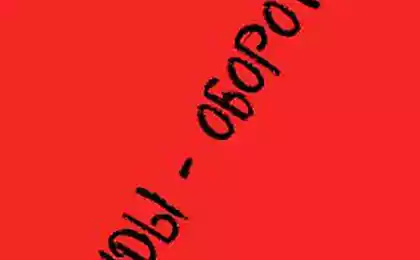1078
Technics - youth!
In the beginning was the word.
On Yap recently frequent posts about helicopters affecting its illiteracy and sucked from the finger facts. So much so, that the Mi-24 helicopter and announced not "taken away" from him the ability to fly in hover. In order to clear these kultprosvetraboty fantasies I decided to create a series of posts about the helicopters. Thank a teacher to practice my aerodynamics Zozulya VB
It would seem that what is common between AY Rosenbaum and the image of the aviation system. And if Alexander Yakovlevich less clear), let's try together to figure out the second picture. We start from afar ...
18 photo.
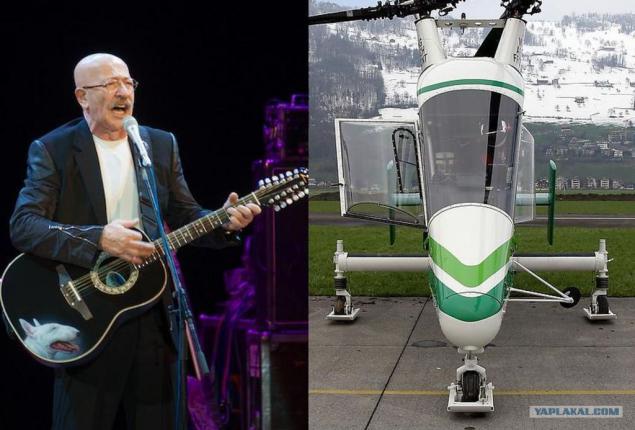
There will be no graduation on the best, Russian, etc. There are just the most vivid and characteristic examples of art. Just like to say about the helicopter that he is the most powerful or the most heavy-lift? Mi-26? Sorry ... It weighs 29 tons empty, but can only take 20 tonnes. You will be surprised the fact that N. Valuev weighs 140 kg, it will raise 90 kg? No, because many can. But the only helicopter (on my can already and not enough information), which can raise himself a French SE-313B Alouette II. Lark in Russian.
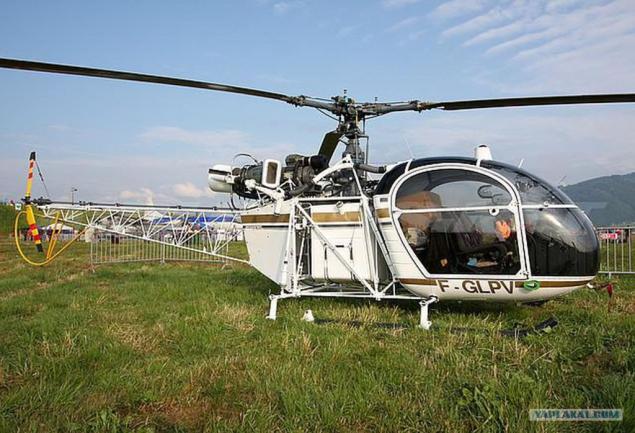
We extend our educational program.
We begin with the layouts of helicopters, depending on the availability and location of the main and tail rotors.
So, naturally the number 1 - single-rotor design. Talk like about it is not necessary. Many of you have seen helicopters and 80% of these were single-rotor helicopters with the scheme. Their thousands. Their name - the Legion).

But as in that joke, there is a nuance, and it's called "reluctance torque".
In more or less correctly, according to the third law of mechanics, while rotating the screw clockwise, the fuselage of the helicopter should rotate counter-clockwise. Striving to rotate fuselage called reactive torque and any change in motor power and the collective pitch leads to a corresponding change of torque. The task of the tail rotor - to compensate for the reactive torque. When the tail rotor thrust creates a moment equal to the reactive torque from the main rotor, nose held straight. If the tail rotor thrust is increased, the helicopter is rotated around the vertical axis (rotor shaft), causing the nose to go right. In a similar manner, a reduction of tail rotor thrust, the reactive force torque to rotate the tail to the right and left nose.
Below is a picture explaining this "Shamanism»
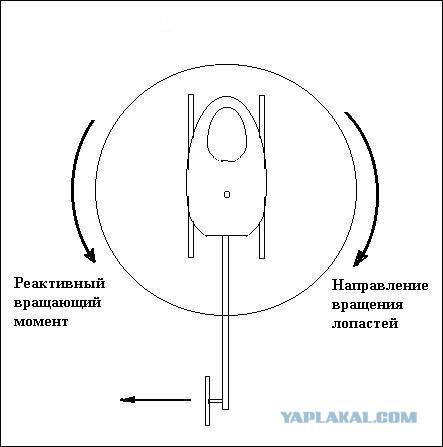
But it turns out this is not the only way.
Have you heard about the blast management system? No. Well then, and briefly tell about her.
Helicopters with such a system in the tail boom has a fan that sucks the air creating the need to increase the pressure inside the tail boom. On the right side of the tail boom by means of special nozzles installed faster airflow than the left side. According to Bernoulli's law, the air pressure is greater on the left than on the right, this results in a force directed to the right.
A typical example of such a system with the helicopter - a helicopter MD902.
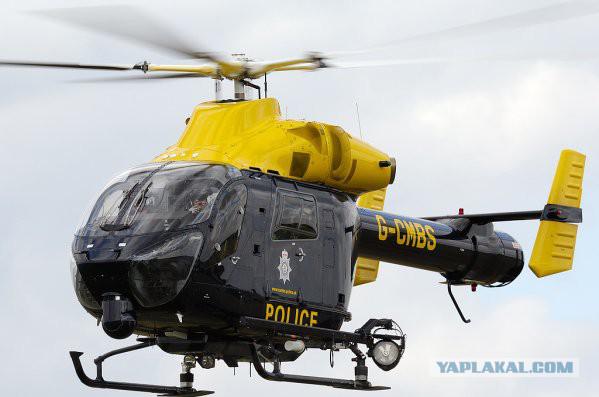
There are fenestron system with tail rotor in the annular channel of the keel. The first is made by the French. Despite the high efficiency (almost 2 times), such a scheme is used today in light helicopters, because increasing the thickness and weight of the keel, making installation fenestron heavy helicopters inappropriate
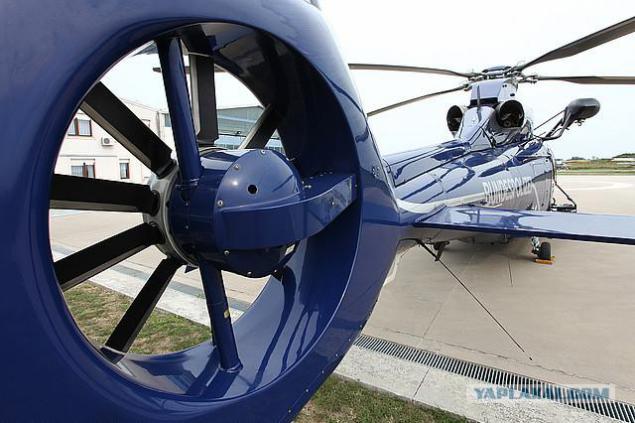
By the way, in 1975 on one of the experimental prototype of the Mi-24 was tested fenestron, but it has not received further applications deemed inappropriate for helicopters in its class.
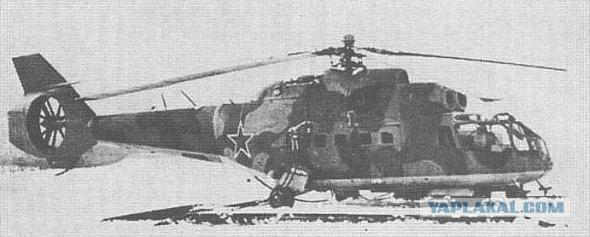
According to the location and the power generated by tail rotor, they are divided into pulling and pushing. Almost like in the car - front or rear wheel drive. As you can imagine pulling screw preferable. The figure below shows the Mi-24 with a different arrangement of the tail rotor.
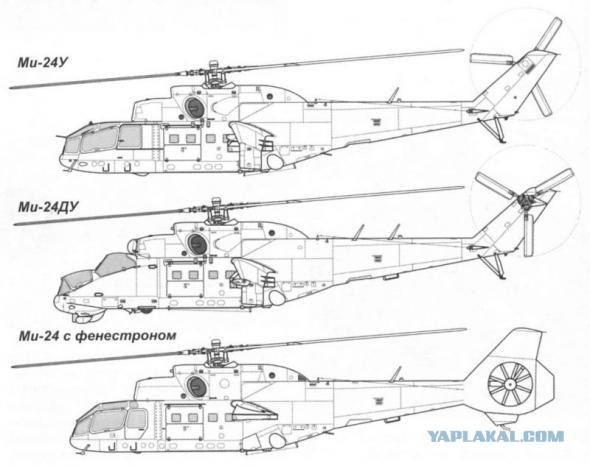
There are other single-rotor design, but they are so rare, exotic and adventurous, they deserve separate special words. But not now.
For example: the circuit with the installation of a ramjet engines helical tip; circuit when compressed air is supplied via pipes to the nozzles at the blade tip, and many others, ending with the invention in 1956 by Russian-born American Yevgeniy Glukhareva first jet backpack helicopter MEG-1X. He designed his creation to a successful jet engine that runs on propane. The test flight Glukhareva managed to hang in the air 18 minutes and develop a speed of about 90 km / h.
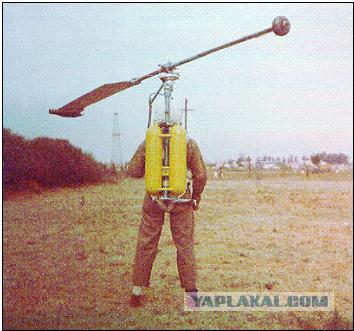
By the way, Soviet engineers did not lag behind and sometimes ahead of the world in the minds of the helicopter. For example, engineers BJ Zherebtsov, YS Braginsky and YL Starininym was designed by highly experienced single mini-helicopter. This machine was equipped with a two-bladed propeller and miniature ram, throbbing engines, the length of each of which does not exceed 25 cm. Now such a device:
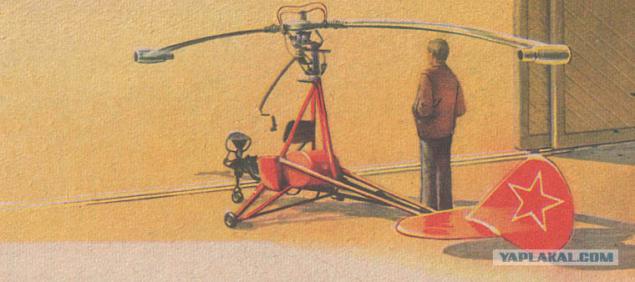
Or for example, students created a few small original helicopter, including the pilot MAI X-5. This unit with an open cabin had an unusual power-plant capacity of 48 hp It consisted of eight (!!!), two-cylinder, two-stroke, modified motors from the chainsaw "Friendship" combined into one unit.
Experimental Ultra Small helicopter MAI X-5 (USSR, 1973). Single, twin-screw, cross-circuits. Total engine power - 48 hp The diameter of the rotor - 1, 1 m, without a pilot weight - 45 kg. Maximum design speed - 157 km / h. Current static ceiling - 1200 m. The estimated duration of the flight - 1 hour 27 minutes. Estimated range - 100 km.
MAI X-5 for that matter, and other helicopters started in student design offices of our universities, was successfully demonstrated at the international exhibitions, particularly in Havana, Milan and Los Angeles.
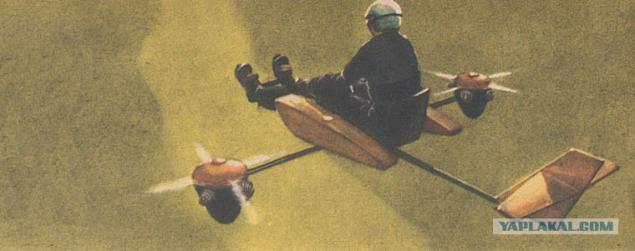
Unfortunately it is impossible in a post to talk about all the diversity of human thought in the helicopter.
As you can see, the last picture is already showing the unit with 2 screws. So imperceptibly we move on to the two-and mnogovintovym schemes.
The twin-screw schemes to my mind, palm firmly holds Russian, rather CB "Kamov". The coaxial arrangement of the screws so popular that it has surprised no one. We will not do that and we will. Show only my favorite - the helicopter Ka-26.
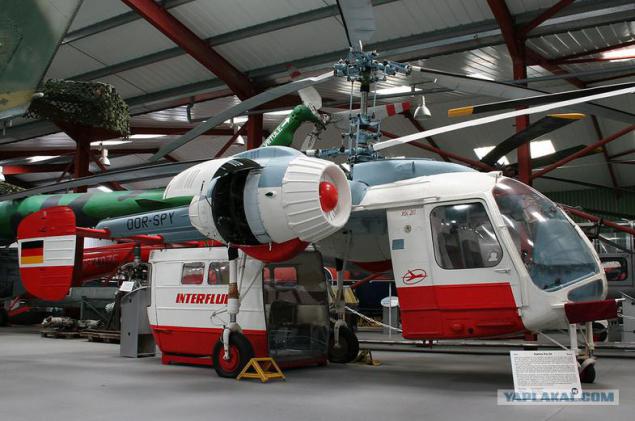
I do not know how it goes according to NATO classification, but we called the "Sabre Dance»).
It is further noted longitudinal scheme. It consists of two horizontal screws arranged one behind the other and rotating in opposite directions. Rear screw raised above the front to reduce the negative impact of air flow from the front of the screw. A typical carrier of such a scheme is a helicopter 47 Boeing CH-Chinook.
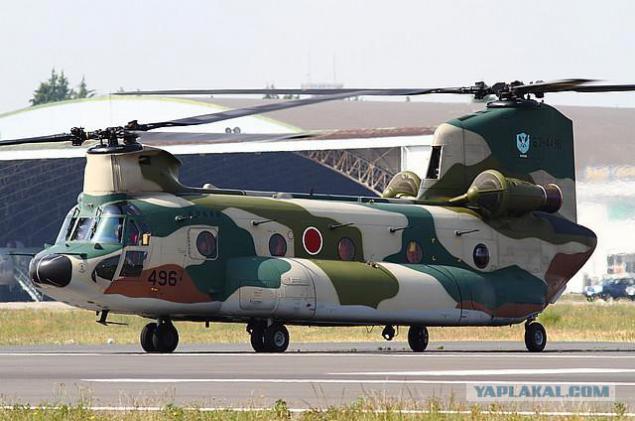
In this scheme there are pros and cons, however, as well as any. Cons it is the emergence of a significant vibration in certain flight conditions, incomplete compensation of reactive moments of screws, which leads to the appearance of parasitic lateral force, sophisticated transmission.
Another member of the scheme is a twin-screw - cross scheme. You could see it on the helicopter Mi-12 (B-12), but the first successful helicopter transverse scheme was the German Focke-Wulf Fw 61, who in 1937 set a number of records for distance and speed.
Unfortunately difficult mission, the increased weight of the structure and increased the drag of such a scheme is a significant restriction on its dissemination.
The photo Fw-61, and Hermann Goering Reich Reich Ministry of Aviation.

Even minimal widely circuit 3, 4, 5, or more screws. The reasons are the same.
In the mid-70s in the Mil helicopter superheavy project appeared a very unusual circuit, which received index Mi-32.Gavny Designer MN Tishchenko decided to design a chopper circuit in trёhvintovoy SALT systems Mi-26.Vybor such scheme was due to the required load capacity 55-60 tons.
Two schemes were studied compounds gondolas fyuzellyazha "star" in which the beam from each nacelle converge at a single point in the center of the triangle (the scheme of the company brand name "Mercedes"), and the "triangle" when beams form the sides of an equilateral treugolnika.Vybor was made in favor of the "triangle" .To reduce the loss from the harmful influence of the rotor, a nacelle located on the front and two gondolas - behind.
The calculated performance characteristics: take-off weight, 146-150 tons capacity motor 6h8360l.s, speed, 230km / h, dynamic ceiling, 4000m, 1500m-static ceiling, range-up 1200 km, capacity 60 tons.
In the photo of the Mi-32. Draft helicopter with three screws.

A separate branch of the structure of matter, or so-called konvertoplanov as they are called - vertibirds.
A typical and most successful vehicles in this scheme is undoubtedly Bell V-22 Osprey.
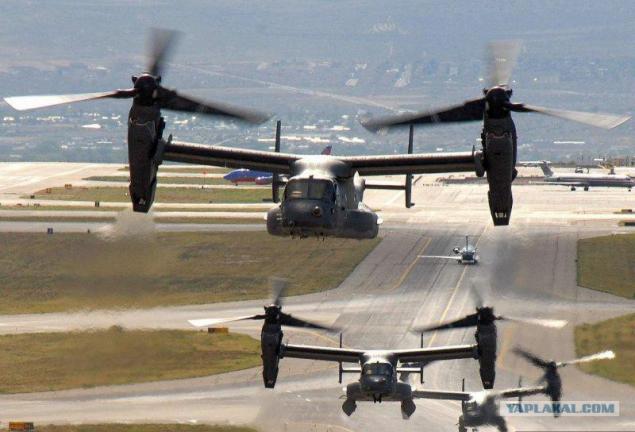
This is such an interesting design, and I know her so little (sorry, when I was not yet taught), it's better to read about it here: topwar.ru/20699-v-22-ospri.html
Posted another photo of a handsome man)
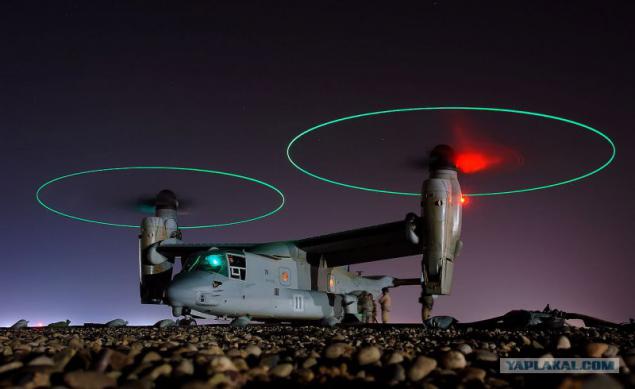
It seems to be all. Oh yeah, and what is there to A.Ya.Rozenbaumom).
I imagine your curiosity: the scheme with crossed paddles or intermeshing rotors.
Rotors located on each side of the fuselage with considerable overlap, and their axes are inclined outwardly at an angle to each other. This scheme is a special case of the transverse circuit the maximum possible overlap of the rotors, at the same time has the properties coaxial.
The only manufacturer of such serial helicopters is an American company Kaman Corporation. Her undeniable advantages: the minimum dimensions; Easy and light transmission; small relative weight of the structure.
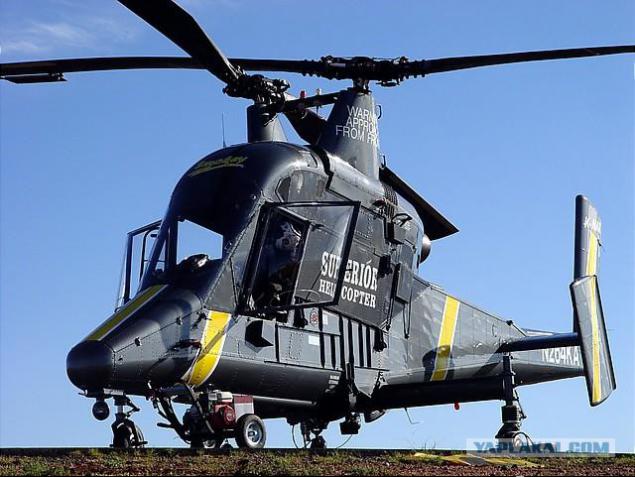
According to the company Kaman, scheme helicopter crossed rotors is most effective when performing a vertical lifting, as it provides a reduction in power consumption, weight construction, noise, vibration, the cost of tehnichesvoe service, as well as safety-related absence tail rotor.
Helicopter systems as simple as possible, the helicopter is designed for the requirements of a minimum of maintenance in the field. No hydraulic actuators, servozakrylki rotor blades provide a small force on the control stick. The electric power is used only the direct current; lead-acid battery is maintenance-free.
You may ask: Well, where is about Rosenbaum?
Charles Kaman was educated aeronautical engineer at the Catholic University of Washington, worked for the company Hamilton Standard, designed the first helicopter rotors for Igor Sikorsky. Kaman professionally interested in vibration was a good amateur guitarist and create own guitar, experimenting with different materials. The result of these experiments was the Ovation guitar 1966, which combines traditional wooden deck and a round body cavity of modern polymers. Among the musical inventions Kamana - technology for manufacturing carbon fiber guitar December, piano design, and so in December. N. Founded at the same company for the production of guitars Kaman Music eventually became an important part of the family business, and it supported the Helicopter division of profits in periods of lack of money. With this support, Kaman Helicopters until 1993 never cut workers actually served in the "lifetime employment." Over time Kaman Music bought dozens of third-party tools, and in late 2007 she was sold to Fender. That guitar company Ovation - Legend 12-String Model 1755 and enjoyed our favorite AY Rosenbaum.))
Let me finish on this first excursion into the world of helicopters. Your Chapleen.
Source:
On Yap recently frequent posts about helicopters affecting its illiteracy and sucked from the finger facts. So much so, that the Mi-24 helicopter and announced not "taken away" from him the ability to fly in hover. In order to clear these kultprosvetraboty fantasies I decided to create a series of posts about the helicopters. Thank a teacher to practice my aerodynamics Zozulya VB
It would seem that what is common between AY Rosenbaum and the image of the aviation system. And if Alexander Yakovlevich less clear), let's try together to figure out the second picture. We start from afar ...
18 photo.

There will be no graduation on the best, Russian, etc. There are just the most vivid and characteristic examples of art. Just like to say about the helicopter that he is the most powerful or the most heavy-lift? Mi-26? Sorry ... It weighs 29 tons empty, but can only take 20 tonnes. You will be surprised the fact that N. Valuev weighs 140 kg, it will raise 90 kg? No, because many can. But the only helicopter (on my can already and not enough information), which can raise himself a French SE-313B Alouette II. Lark in Russian.

We extend our educational program.
We begin with the layouts of helicopters, depending on the availability and location of the main and tail rotors.
So, naturally the number 1 - single-rotor design. Talk like about it is not necessary. Many of you have seen helicopters and 80% of these were single-rotor helicopters with the scheme. Their thousands. Their name - the Legion).

But as in that joke, there is a nuance, and it's called "reluctance torque".
In more or less correctly, according to the third law of mechanics, while rotating the screw clockwise, the fuselage of the helicopter should rotate counter-clockwise. Striving to rotate fuselage called reactive torque and any change in motor power and the collective pitch leads to a corresponding change of torque. The task of the tail rotor - to compensate for the reactive torque. When the tail rotor thrust creates a moment equal to the reactive torque from the main rotor, nose held straight. If the tail rotor thrust is increased, the helicopter is rotated around the vertical axis (rotor shaft), causing the nose to go right. In a similar manner, a reduction of tail rotor thrust, the reactive force torque to rotate the tail to the right and left nose.
Below is a picture explaining this "Shamanism»

But it turns out this is not the only way.
Have you heard about the blast management system? No. Well then, and briefly tell about her.
Helicopters with such a system in the tail boom has a fan that sucks the air creating the need to increase the pressure inside the tail boom. On the right side of the tail boom by means of special nozzles installed faster airflow than the left side. According to Bernoulli's law, the air pressure is greater on the left than on the right, this results in a force directed to the right.
A typical example of such a system with the helicopter - a helicopter MD902.

There are fenestron system with tail rotor in the annular channel of the keel. The first is made by the French. Despite the high efficiency (almost 2 times), such a scheme is used today in light helicopters, because increasing the thickness and weight of the keel, making installation fenestron heavy helicopters inappropriate

By the way, in 1975 on one of the experimental prototype of the Mi-24 was tested fenestron, but it has not received further applications deemed inappropriate for helicopters in its class.

According to the location and the power generated by tail rotor, they are divided into pulling and pushing. Almost like in the car - front or rear wheel drive. As you can imagine pulling screw preferable. The figure below shows the Mi-24 with a different arrangement of the tail rotor.

There are other single-rotor design, but they are so rare, exotic and adventurous, they deserve separate special words. But not now.
For example: the circuit with the installation of a ramjet engines helical tip; circuit when compressed air is supplied via pipes to the nozzles at the blade tip, and many others, ending with the invention in 1956 by Russian-born American Yevgeniy Glukhareva first jet backpack helicopter MEG-1X. He designed his creation to a successful jet engine that runs on propane. The test flight Glukhareva managed to hang in the air 18 minutes and develop a speed of about 90 km / h.

By the way, Soviet engineers did not lag behind and sometimes ahead of the world in the minds of the helicopter. For example, engineers BJ Zherebtsov, YS Braginsky and YL Starininym was designed by highly experienced single mini-helicopter. This machine was equipped with a two-bladed propeller and miniature ram, throbbing engines, the length of each of which does not exceed 25 cm. Now such a device:

Or for example, students created a few small original helicopter, including the pilot MAI X-5. This unit with an open cabin had an unusual power-plant capacity of 48 hp It consisted of eight (!!!), two-cylinder, two-stroke, modified motors from the chainsaw "Friendship" combined into one unit.
Experimental Ultra Small helicopter MAI X-5 (USSR, 1973). Single, twin-screw, cross-circuits. Total engine power - 48 hp The diameter of the rotor - 1, 1 m, without a pilot weight - 45 kg. Maximum design speed - 157 km / h. Current static ceiling - 1200 m. The estimated duration of the flight - 1 hour 27 minutes. Estimated range - 100 km.
MAI X-5 for that matter, and other helicopters started in student design offices of our universities, was successfully demonstrated at the international exhibitions, particularly in Havana, Milan and Los Angeles.

Unfortunately it is impossible in a post to talk about all the diversity of human thought in the helicopter.
As you can see, the last picture is already showing the unit with 2 screws. So imperceptibly we move on to the two-and mnogovintovym schemes.
The twin-screw schemes to my mind, palm firmly holds Russian, rather CB "Kamov". The coaxial arrangement of the screws so popular that it has surprised no one. We will not do that and we will. Show only my favorite - the helicopter Ka-26.

I do not know how it goes according to NATO classification, but we called the "Sabre Dance»).
It is further noted longitudinal scheme. It consists of two horizontal screws arranged one behind the other and rotating in opposite directions. Rear screw raised above the front to reduce the negative impact of air flow from the front of the screw. A typical carrier of such a scheme is a helicopter 47 Boeing CH-Chinook.

In this scheme there are pros and cons, however, as well as any. Cons it is the emergence of a significant vibration in certain flight conditions, incomplete compensation of reactive moments of screws, which leads to the appearance of parasitic lateral force, sophisticated transmission.
Another member of the scheme is a twin-screw - cross scheme. You could see it on the helicopter Mi-12 (B-12), but the first successful helicopter transverse scheme was the German Focke-Wulf Fw 61, who in 1937 set a number of records for distance and speed.
Unfortunately difficult mission, the increased weight of the structure and increased the drag of such a scheme is a significant restriction on its dissemination.
The photo Fw-61, and Hermann Goering Reich Reich Ministry of Aviation.

Even minimal widely circuit 3, 4, 5, or more screws. The reasons are the same.
In the mid-70s in the Mil helicopter superheavy project appeared a very unusual circuit, which received index Mi-32.Gavny Designer MN Tishchenko decided to design a chopper circuit in trёhvintovoy SALT systems Mi-26.Vybor such scheme was due to the required load capacity 55-60 tons.
Two schemes were studied compounds gondolas fyuzellyazha "star" in which the beam from each nacelle converge at a single point in the center of the triangle (the scheme of the company brand name "Mercedes"), and the "triangle" when beams form the sides of an equilateral treugolnika.Vybor was made in favor of the "triangle" .To reduce the loss from the harmful influence of the rotor, a nacelle located on the front and two gondolas - behind.
The calculated performance characteristics: take-off weight, 146-150 tons capacity motor 6h8360l.s, speed, 230km / h, dynamic ceiling, 4000m, 1500m-static ceiling, range-up 1200 km, capacity 60 tons.
In the photo of the Mi-32. Draft helicopter with three screws.

A separate branch of the structure of matter, or so-called konvertoplanov as they are called - vertibirds.
A typical and most successful vehicles in this scheme is undoubtedly Bell V-22 Osprey.

This is such an interesting design, and I know her so little (sorry, when I was not yet taught), it's better to read about it here: topwar.ru/20699-v-22-ospri.html
Posted another photo of a handsome man)

It seems to be all. Oh yeah, and what is there to A.Ya.Rozenbaumom).
I imagine your curiosity: the scheme with crossed paddles or intermeshing rotors.
Rotors located on each side of the fuselage with considerable overlap, and their axes are inclined outwardly at an angle to each other. This scheme is a special case of the transverse circuit the maximum possible overlap of the rotors, at the same time has the properties coaxial.
The only manufacturer of such serial helicopters is an American company Kaman Corporation. Her undeniable advantages: the minimum dimensions; Easy and light transmission; small relative weight of the structure.

According to the company Kaman, scheme helicopter crossed rotors is most effective when performing a vertical lifting, as it provides a reduction in power consumption, weight construction, noise, vibration, the cost of tehnichesvoe service, as well as safety-related absence tail rotor.
Helicopter systems as simple as possible, the helicopter is designed for the requirements of a minimum of maintenance in the field. No hydraulic actuators, servozakrylki rotor blades provide a small force on the control stick. The electric power is used only the direct current; lead-acid battery is maintenance-free.
You may ask: Well, where is about Rosenbaum?
Charles Kaman was educated aeronautical engineer at the Catholic University of Washington, worked for the company Hamilton Standard, designed the first helicopter rotors for Igor Sikorsky. Kaman professionally interested in vibration was a good amateur guitarist and create own guitar, experimenting with different materials. The result of these experiments was the Ovation guitar 1966, which combines traditional wooden deck and a round body cavity of modern polymers. Among the musical inventions Kamana - technology for manufacturing carbon fiber guitar December, piano design, and so in December. N. Founded at the same company for the production of guitars Kaman Music eventually became an important part of the family business, and it supported the Helicopter division of profits in periods of lack of money. With this support, Kaman Helicopters until 1993 never cut workers actually served in the "lifetime employment." Over time Kaman Music bought dozens of third-party tools, and in late 2007 she was sold to Fender. That guitar company Ovation - Legend 12-String Model 1755 and enjoyed our favorite AY Rosenbaum.))
Let me finish on this first excursion into the world of helicopters. Your Chapleen.
Source:

